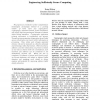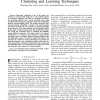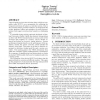29 search results - page 5 / 6 » Complexity Bounds for the Verification of Real-Time Software |
ACSAC
2006
IEEE
14 years 1 months ago
2006
IEEE
We propose an architecture of four complimentary technologies increasingly relevant to a growing number of home users and organizations: cryptography, separation kernels, formal v...
CODES
2006
IEEE
14 years 1 months ago
2006
IEEE
It is observed that pulsed discharge currents allow to drain the battery with a higher specific power. Thus they improve the batteries durability and discharge performance. The q...
TCAD
2010
13 years 2 months ago
2010
Abstract--Functional verification is one of the major bottlenecks in system-on-chip design due to the combined effects of increasing complexity and lack of automated techniques for...
TOPLAS
2008
13 years 7 months ago
2008
lem of inferring termination from such abstract information is not the halting problem for programs and may well be decidable. If this is the case, the decision algorithm forms a &...
EMSOFT
2006
Springer
13 years 11 months ago
2006
Springer
Upper bounds on worst-case execution times, which are commonly called WCET, are a prerequisite for validating the temporal correctness of tasks in a real-time system. Due to the e...



